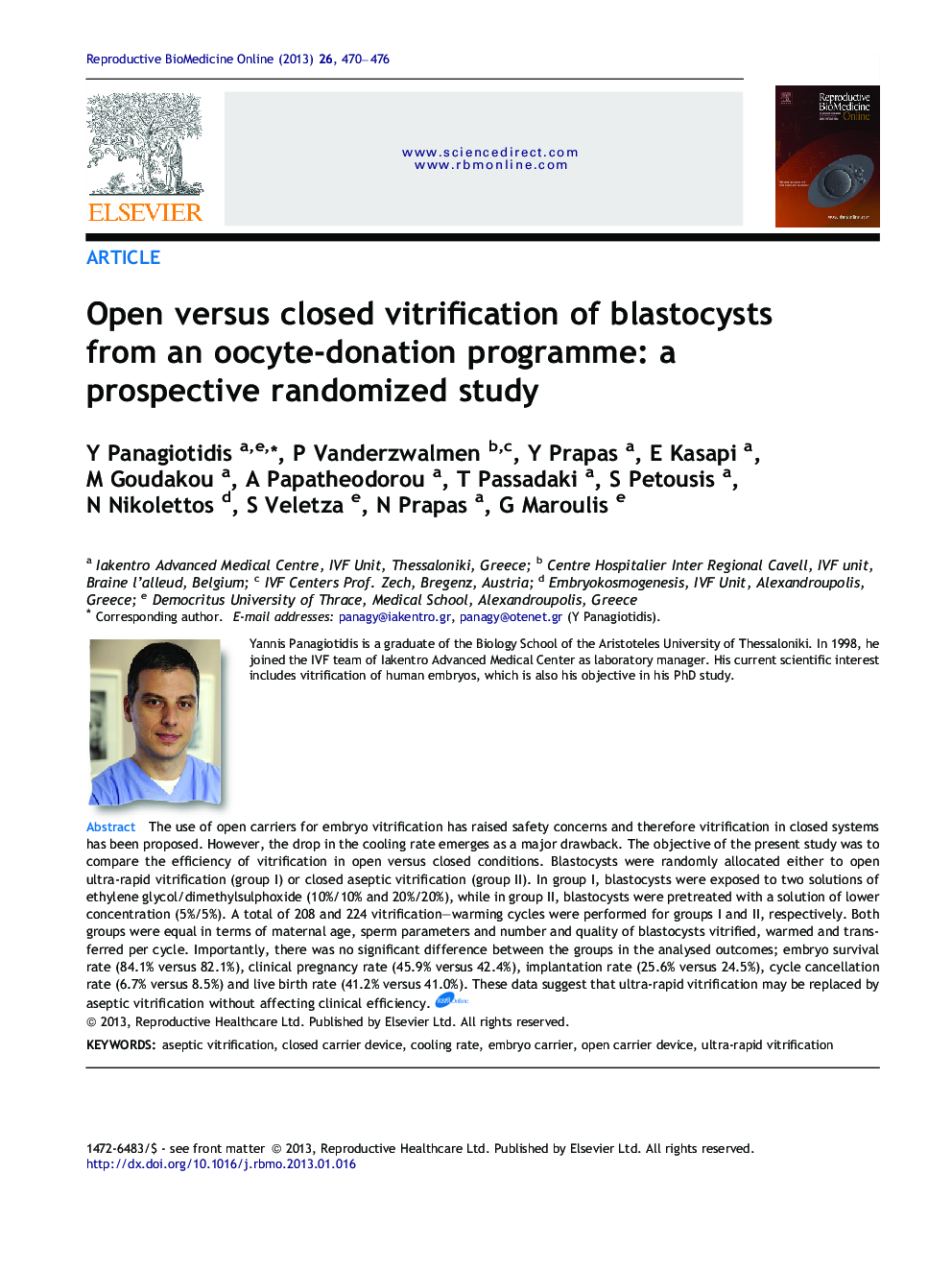| Article ID | Journal | Published Year | Pages | File Type |
|---|---|---|---|---|
| 6189120 | Reproductive BioMedicine Online | 2013 | 7 Pages |
The use of open carriers for embryo vitrification has raised safety concerns and therefore vitrification in closed systems has been proposed. However, the drop in the cooling rate emerges as a major drawback. The objective of the present study was to compare the efficiency of vitrification in open versus closed conditions. Blastocysts were randomly allocated either to open ultra-rapid vitrification (group I) or closed aseptic vitrification (group II). In group I, blastocysts were exposed to two solutions of ethylene glycol/dimethylsulphoxide (10%/10% and 20%/20%), while in group II, blastocysts were pretreated with a solution of lower concentration (5%/5%). A total of 208 and 224 vitrification-warming cycles were performed for groups I and II, respectively. Both groups were equal in terms of maternal age, sperm parameters and number and quality of blastocysts vitrified, warmed and transferred per cycle. Importantly, there was no significant difference between the groups in the analysed outcomes; embryo survival rate (84.1% versus 82.1%), clinical pregnancy rate (45.9% versus 42.4%), implantation rate (25.6% versus 24.5%), cycle cancellation rate (6.7% versus 8.5%) and live birth rate (41.2% versus 41.0%). These data suggest that ultra-rapid vitrification may be replaced by aseptic vitrification without affecting clinical efficiency.Vitrification is defined as the solidification of a liquid without the formation of ice crystals. The basic principle lies in finding the correct balance between the intracellular amount of cryoprotectants and the cooling rate, without inducing a toxic effect. Before plunging in liquid nitrogen, the embryos are deposited on a carrier device that can be described as open or closed. The use of open carriers have raised safety concerns and therefore vitrification in closed systems has been proposed. However, the drop in the cooling rate emerges as a major drawback. The objective of the present study was to analyse the outcome of vitrification of blastocysts randomly allocated to either open vitrification (group I) or aseptic vitrification (group II) using the VitriSafe as the embryo carrier in both groups. In group I, blastocysts were exposed to two cryoprotectant solutions of ethylene glycol/dimethylsulphoxide (10%/10% and 20%/20%), while in group II, blastocysts were initially exposed to an additional solution of lower concentration (5%/5%). A total of 208 and 224 vitrification-warming cycles were initiated for group I and group II, respectively. Both groups were equal in terms of maternal age, sperm parameters and number and quality of blastocysts vitrified, warmed and transferred per cycle. There was no statistically significant difference between the two groups in the analysed outcomes; embryo survival rate (84.1% versus 82.1%), clinical pregnancy rate (45.9% versus 42.4%), implantation rate (25.6% versus 24.5%), cycle cancellation rate (6.7% versus 8.5%) and live birth rate (41.2% versus 41.0%). Ultra-rapid vitrification can be replaced by aseptic vitrification without affecting cryopreservation efficiency.
